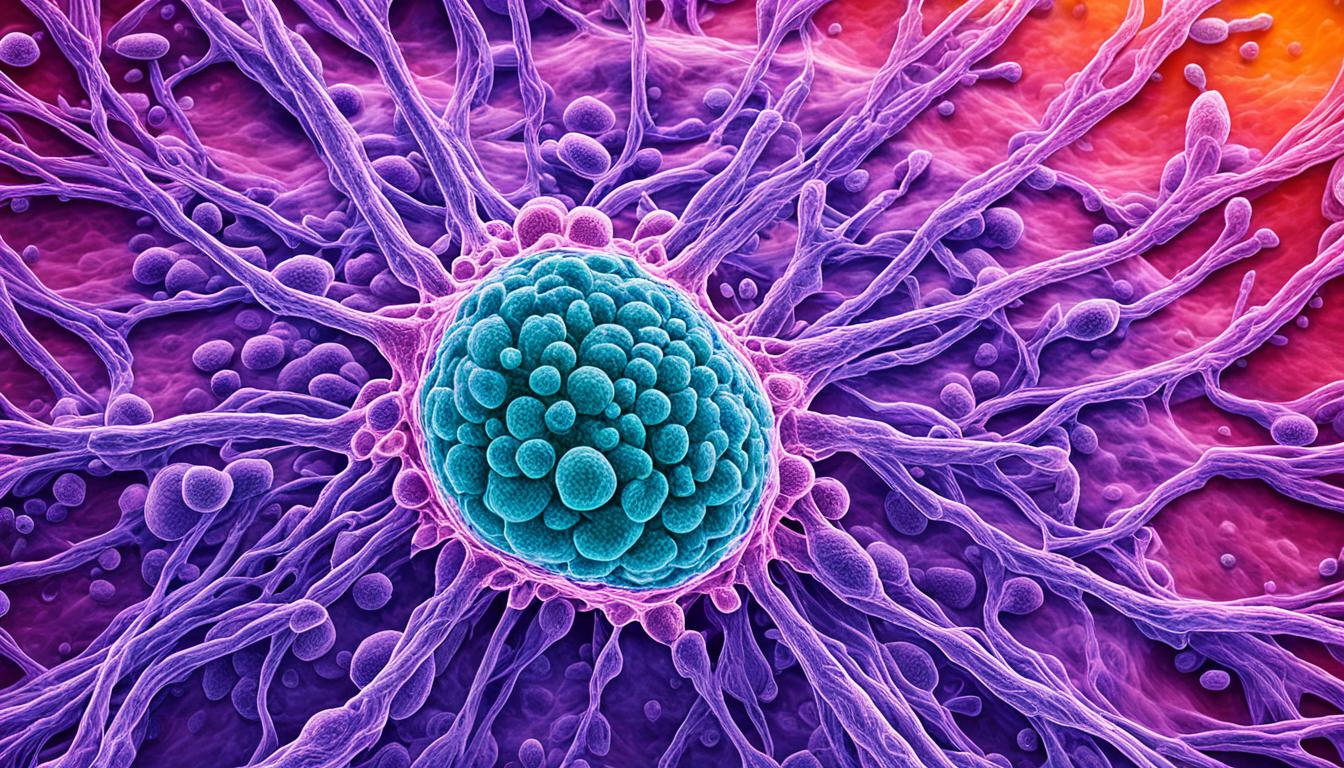Prostate cancer is very common among men worldwide. It’s the sixth leading cause of cancer deaths for men. Risk factors include age, ethnicity, being overweight, and family history. Most cases don’t show any symptoms, but some signs are there. These include needing to urinate often, a weak urine flow, and finding blood in your urine. You might also notice erectile dysfunction and some bone pain.
Getting diagnosed early is key for better treatment. Tests like the prostate-specific antigen (PSA) test, MRI scans, and prostate biopsies help find out if you have it. There are also new tests, like the risk stratification bioassay tests and certain PET scans, that can help.
The treatment you get depends on how much the cancer has grown and spread. Options include surgery, radiation, hormones, chemotherapy, immunotherapy, and targeted therapy. It’s important to team up with your doctors to choose what’s best for you.
Key Takeaways
- Prostate cancer is the most commonly diagnosed malignancy in men.
- Risk factors for prostate cancer include age, ethnicity, obesity, and family history.
- Common symptoms of prostate cancer include frequent urination, weak urine flow, blood in the urine, erectile dysfunction, and bone pain.
- Early diagnosis is crucial for effective treatment.
- Treatment options may include surgery, radiation therapy, hormone therapy, chemotherapy, immunotherapy, and targeted therapies.
The Role of Stem Cell Therapy in Prostate Cancer Treatment
Cancer stem cells (CSCs) are crucial for the spread, resistance to drugs, and return of prostate cancer. They show properties similar to stem cells, making them able to renew themselves and change into different cell types within the cancer.
The androgen receptor (AR) signaling pathway is key for prostate CSCs to survive and grow. If the AR pathways are messed up, it can cause drug resistance in prostate cancer. Scientists aim to break this AR pathway to defeat drug resistance.
Naming specific surface markers has made it easier to find and study prostate CSCs. Key markers are CD44, ALDH1A1, CD133, and CD166. These markers help in understanding the biology of prostate CSCs and developing focused treatments.
Targeting these markers or the AR pathway is showing hope in creating new treatments to get rid of prostate CSCs. The goal is to offer better and longer-lasting treatment choices. By stopping the cancer at its root, these treatments work to fight tumor growth and drug resistance.
Surface Markers in Prostate Cancer Stem Cells
| Surface Marker | Function |
|---|---|
| CD44 | Mediates cell adhesion and interaction with the extracellular matrix |
| ALDH1A1 | Involved in cancer stem cell self-renewal and differentiation |
| CD133 | Implicated in tumor initiation and resistance to therapy |
| CD166 | Regulates stem cell-like properties and tumor invasion |
Studying prostate CSCs and how they work with the AR pathway is helping in the creation of focused treatments. These insights are being used to make better treatment plans, which improve patient health in the end.
Conclusion
Prostate cancer is a major disease that affects many men worldwide, with high numbers of both new cases and deaths. Awareness about prostate cancer is crucial, as is getting regularly screened. New tests and scans make prostate cancer diagnosis more accurate today. We also have better treatments, like targeted drugs and immunotherapy.
Dealing with prostate cancer is a team effort, involving various healthcare experts. Their combined knowledge ensures the best care. Palliative care is also key, helping to ease symptoms and enhancing life quality for those in advanced stages.
Research and clinical trials are ongoing, leading to more insights and better treatments. Staying informed and talking to healthcare providers is vital. This empowers individuals to be active in their care plans, choosing what works best for them.

